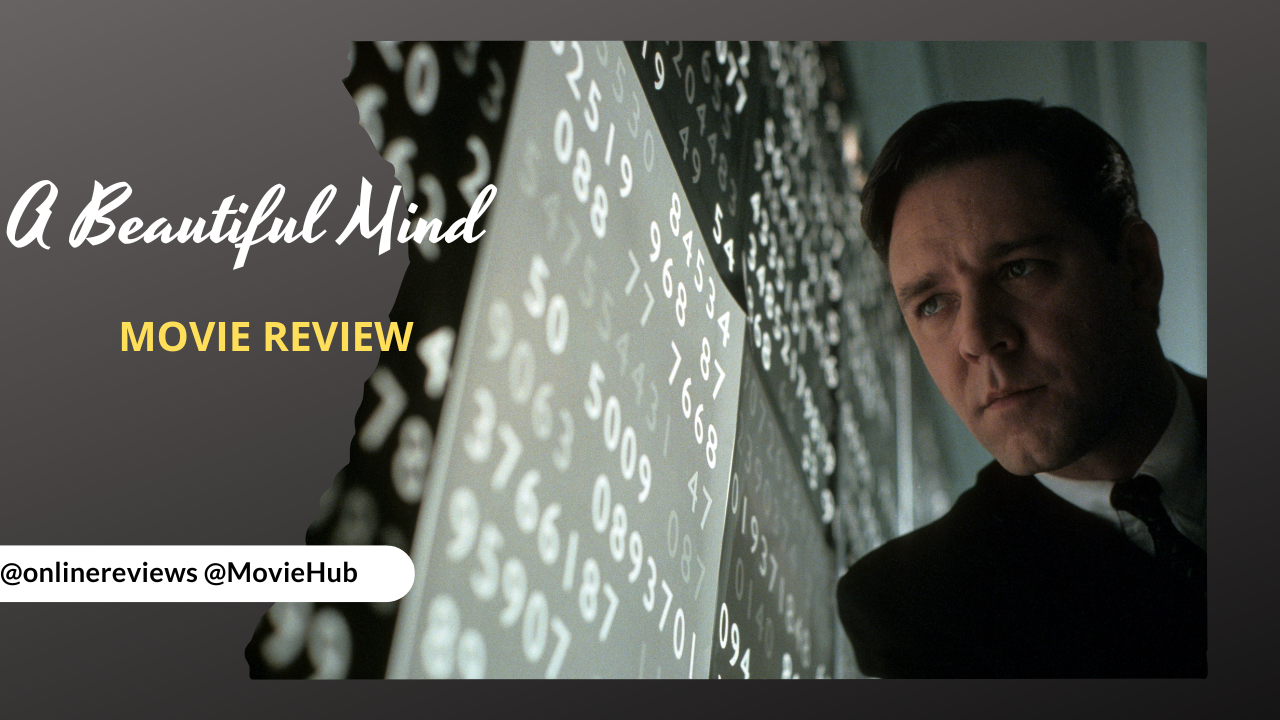CINETV CONTEST: A Beautiful Mind (2001) Movie Review
Frankly, I watched A Beautiful Mind without knowing anything about the Nobel laureate Dr. John Nash, lest about him being diagnosed with paranoid schizophrenia. Over around half of the movie, Ron Howard thins the line between reality and delusions so much through amazing and subliminal filmmaking techniques that we are placed in the shoes of Dr. John Nash viewing the world through his perspective. However, Ron Howard has left hints of differentiating reality from delusions that once observed, are clear enough. The only thing we, as viewers, must do is heighten our hearing and visual senses and notice particularly the subtle moments in this film to understand the masterful filmmaking of Ron Howard.

John Nash is a Princeton Undergrad in mathematics, who is apparently unaware that he is diagnosed with paranoid schizophrenia and as a matter of fact, neither is the audience. He can be characterized as a loner who can explain himself well, particularly in these two sentences.
"The truth is that I don't like people much and they don't much like me."
He spends most of his time alone with his passion – Mathematics. He becomes so obsessed with numbers and algorithms that he tries to inculcate every happening in his life with this thing. Another obsession that puts pressure on John Nash is the desire to be one of the greats. So, Howard uses these factors to introduce three new characters who become a part of his delusion. John’s roommate Charles Herman, his niece Marcee Herman, and William Parcher, a high-level agent in the Department of Defense. Each of these characters serves a purpose to Nash. Charles provides him company and becomes his best friend supporting him in every situation. Marcee Herman gives him a sense of family and unconditional love he needs and William Parcher portrays someone who gives Nash a purpose and further pushes him to achieve his objectives. The initial thing Howard does is introduce these characters.
The first half of A Beautiful Mind entirely focuses on John’s point of view, everything is shown the way he would have perceived it. Every time, any of these three were to make an appearance and interact with Nash, Howard first introduces an audio element before actually presenting them on screen. This helps the audience get into the mind of Nash and helps them establish these characters from his perspective. Also, Howard puts them in situations that are physically pretty much impossible. For example, take the introduction of William Parcher. John Nash is breaking an encrypted code at Pentagon when he sees William Parcher staring back at him. He enquires about Parcher with the question and nobody responds to it.
Later in the movie, Parcher connects with Nash. A simple camera pan and with no sound of the door opening again, there he stands. In fact, upon closer look, the sound of Parcher occurs when we see no one standing at the door and a few seconds later, the camera pans and Parcher is standing here. And guess what he introduces himself as? The same thing happens during Nash’s failed date and during Charles’ interaction with him. He is the only other person who happens to know about Nash’s conversation with the girl. Like any other time, the audio comes before the video, and look at the way Charles exits the door. He doesn’t control the door. But, it is opened for him as he walks. There are several other hints that Ron Howard just lays out that don’t present the delusionary events directly, but rather subtly. The time when Marcee runs on the field, the pigeons don’t seem to be bothered by her, indicating that she is not real.
In the shot where the camera tracks in and we see Nash responding to Charles’ voice with no one around, we cut to show Charles himself, which makes us question his existence. In the particular scene where Nash explains the absurdity and incomplete nature of Adam Smith’s theorem, we come across a surreal sequence of the guys trying to approach the girls. The music or the background score plays an important part in this, which begins with the start of the surreal sequence. But once this sequence is over, the background score stops, and the ambiance kicks in. And this thing occurs every time we see flying numbers or letters or anything that doesn't look real.
There are many subtle observations in this movie and even though people might disagree. A Beautiful Mind deserves multiple views. Ron Howard subtly indoctrinates the theme of this movie into our minds using these masterful filmmaking techniques, which puts us in the same position as that John Nash. We get victimized similarly by the same distortion of reality and face the same dilemma that Nash faces and that’s what the audience should feel. A wide range of emotions of our character’s beautiful mind.
NIce movie that you chose

!1UP
You have received a 1UP from @gwajnberg!
@cine-curator, @neoxag-curator, @cent-curator
And they will bring !PIZZA 🍕.
Learn more about our delegation service to earn daily rewards. Join the Cartel on Discord.
I gifted $PIZZA slices here:
@curation-cartel(8/20) tipped @onlinereviews (x1)
Learn more at https://hive.pizza!